How Not To Dye Wool Yarn
Plus a lot of tips on HOW-TO dye it properly.
So I had this genius idea.
I figured I’d get a 3-slot tray, put a different dye color in each slot, lay 3 skeins of yarn across the colors, microwave and voila. Perfectly dyed yarn. Um. Sounds pretty brilliant. But I failed to realize several important things.
1. The tray ended up knocking back and forth in the microwave, since it was too large to turn. Knock, knock, knock, knock. So yeah. That’s not gonna work.
2. It was way too inefficient. I know many different dyeing methods and my purpose in this method was to find a way to dye multi-tonal yarns quickly and efficiently. Plus I REALLY love experimenting. It really just took forever. And with my current schedule, taking forever to dye 3 skeins of yarn is not going to work.
But here are some pictures of the event:
The dye:
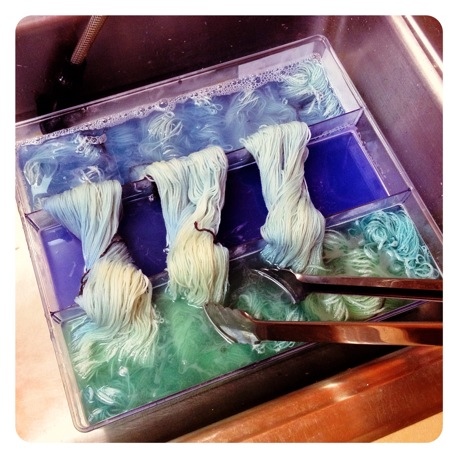 And the finished product. Pretty, but not created efficiently.
And the finished product. Pretty, but not created efficiently.
So it flitted across my mind that I could just reduce my upcoming yarn collections (Air, Earth, Fire and Water – The Four Elements) to just 6 single shades each. I had planned (and still hope) to have 4 multi-colored tones in each collection. So.
My options at this point (in order of least preferable to most preferable) are to:
1. Reduce the collections to 6 single shades each. Blah on this idea.
2. Reduce the collections to 6 single shades, plus 1 or 2 multi-colored shades each. Hmmm. Meh. Maybe.
3. Continue with my original plan of 4 multi-tonal colorways per collection, in addition to the 6 single tones. YAY!
I love dyeing yarn so very much!
If you have never dyed yarn or have but are curious as to more options, here are some various ways you can achieve multi-colors in a skein (as opposed to the skein being all one color):
Essentially, you have to somehow apply the dye to the yarn and then heat set it. This can be done in a variety of ways. I’ll list some, but there are really many different options.
1. Immersion– This involves simmering the yarn.
You can do many variations of this.
a. Dye the entire skein a solid color first. This is done by pouring your dye into the water, bringing it all to a simmer, lowering your skein (or skeins if you’re dyeing multiples at a time) into the water, simmering for 30 to 60 minutes (or until the dye is exhausted, which means all of the dye is soaked into the yarn and the water is clear). Allow to cool to room temperature (don’t be goofy like me and attempt to handle scalding hot yarn with your bare hands. Not good). Rinse. Normally at this point, if you were simply dyeing single-colored skeins, you would then hang this skein to dry. And you’re done. However. Since we are going for multi-colors, you are going to redunk it. So you would bring another bot of boiling water/dye mixture to a simmer, insert only part of the skein (hang the uneeded part on a wire rack suspended above the pot or wrap it around a spoon layed across the pot top), let it simmer till the water is clear. Repeat as many times as you like, with different parts of the yarn to get the effect you want.
b. Another cool way of doing this is to tie knots in your skein. Once you have the initial color on the skein, tie a knot (or 2 or 3) in the skein, and redye in a different color. Repeat if you like. When you are finished dyeing and you untie the skein, you’ll see color variations where the second dye color couldn’t reach into the knotted areas. Very cool.
c. Instead of tying knots, just twist your skein until it starts to fold back up onto itself, secure one end over the other (many yarn brands (including me!) sell their yarns wrapped in these twisted skeins so you’re probably familiar with what I’m talking about), and redye. Another cool, easy way to achieve color variations.
They can also be done in the microwave. If you don’t want to wait 30 to 60 minutes, you can pop your skeins in a bowl with water/dye mixture (instead of a pot) and place in your microwave for several minutes, or until the water is heated and the dye is exhausted. This is pretty darn quick.
2. Another method is hand-painting. This is glorious fun, but a leetle more time-consuming, depending on how you are set up. If you have all of your dye colors pre-mixed and in squirt bottles, then it is fairly quick to lay out your skeins in a tub or sink or on plastic wrap on your counter, squirt the colors on in the order desired, wrap up in the plastic wrap and steam, either on the stove or in the microwave.
Tips: Presoaking the yarn. Or not. If you presoak your yarn in water and vinegar (usually about a cup of vinegar or less, for a gallon of water… it’s really arbitrary), it will soak up the dye more evenly. Usually. If you don’t presoak your yarn, but just dye it dry, it’ll create a more mottled, water-colorish effect. Not as even. I usually opt for this route because I adore the flowy effects and unexpectedness of it all. Each skein is truly a unique work of art! Love it. However, for the effect I’m about to show you, I do presoak the skeins, since part of them will not be immersed in water while microwaving.
SO! I opted for a double dip twisted skein dyeing technique. I’m sure others do this, but I came up with this exact method to suit my needs and desires.
Step 1: I twisted my yarn into skeins and layed them in a tub of water and Dawn dishsoap to soak for a few minutes. Water/vinegar works too.
Step 2: I put the water and dye into a bowl and stirred.
Step 3: I immersed half of each of 6 skeins into the water/dye mixture and microwaved them for 10 minutes. (You want to heat them until the dye is exhausted. You can add vinegar to the water if you feel the dye is not all soaking into the wool)
Step 4: I used tongs (insulated gloves work too) and placed the skeins gently into the sink, rinsed the bowl, added the new dye color and placed the opposite ends of the skeins into the bowl.I placed a jar in the bowl and loosely layed the skeins on top. You can use a hair clippy to secure them together so they don’t fall into the water. Microwave for 10 minutes.
Step 5: Then I just rinsed the skeins and hung to dry!
Here’s another color combo I did:
And finished:
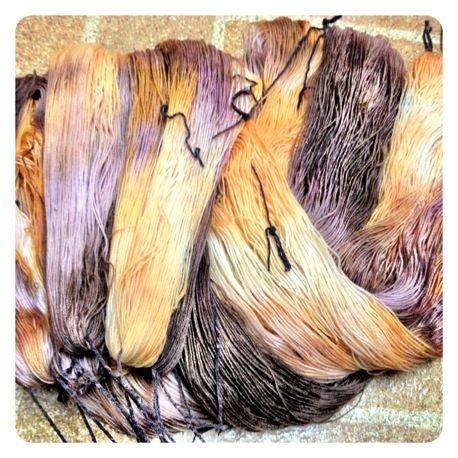 So there you go! I’ve dyed several more colors and I’ll be posting about those soon! I’m really in love with some of the green/purple combos I’ve created! I can’t wait to show you!
So there you go! I’ve dyed several more colors and I’ll be posting about those soon! I’m really in love with some of the green/purple combos I’ve created! I can’t wait to show you!
And finally a quote for today:
“Excellence is the gradual result of always striving to do better.” -Pat Riley

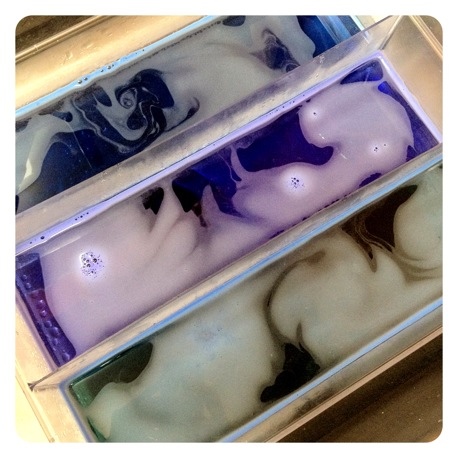
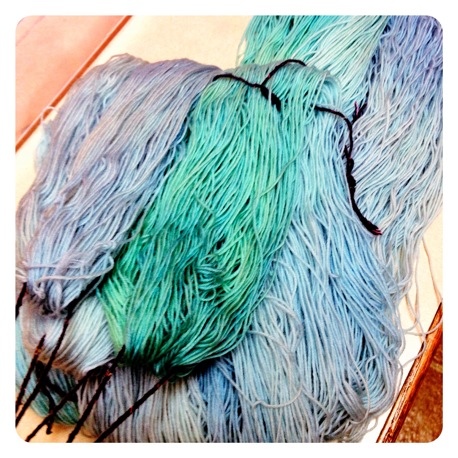
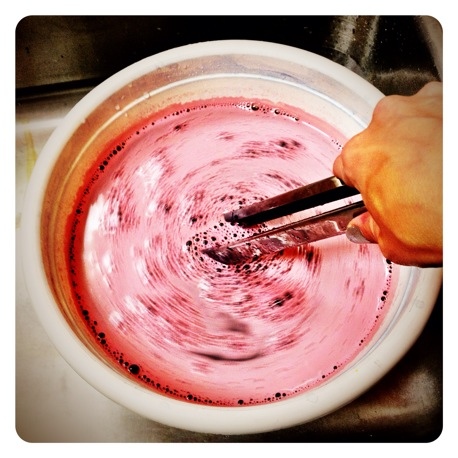


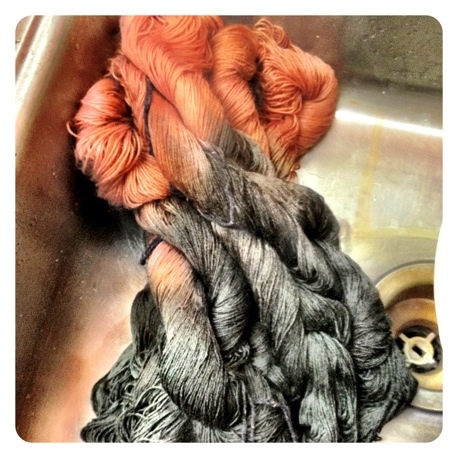
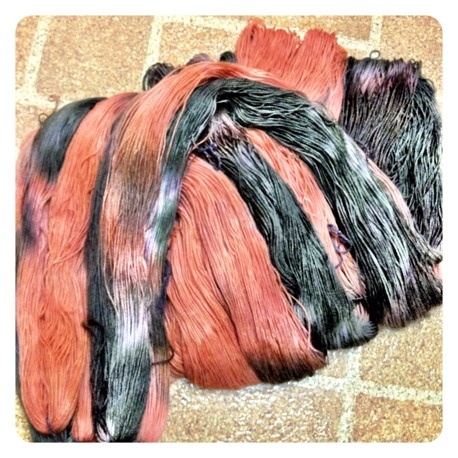
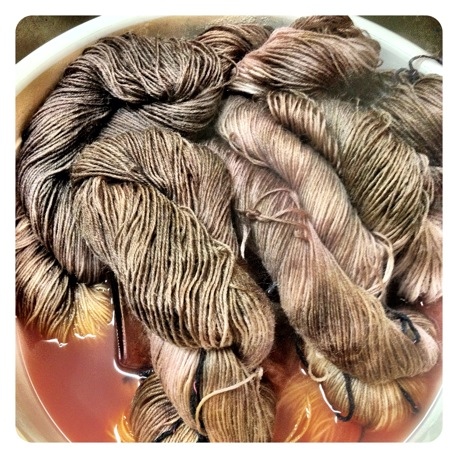
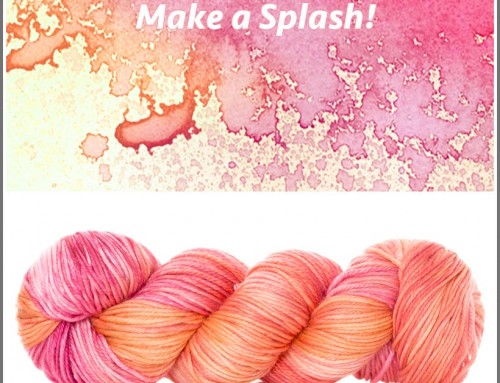
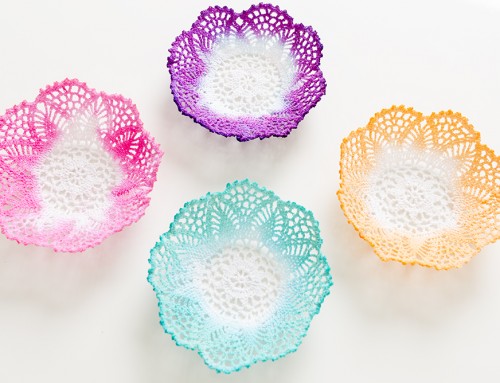
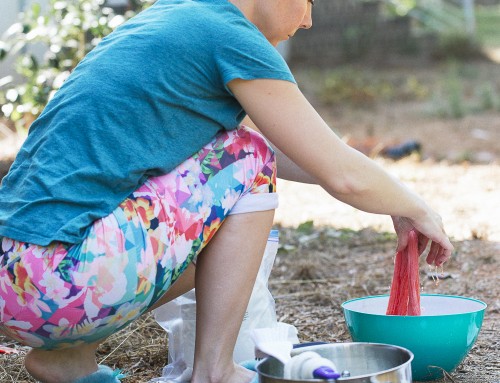
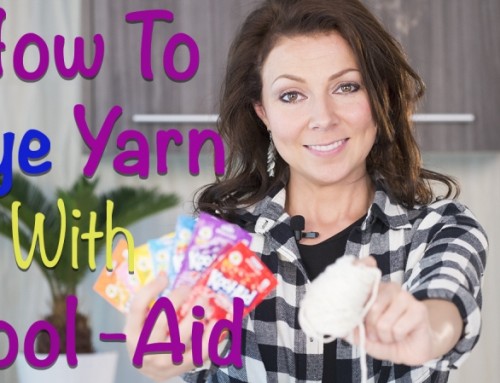
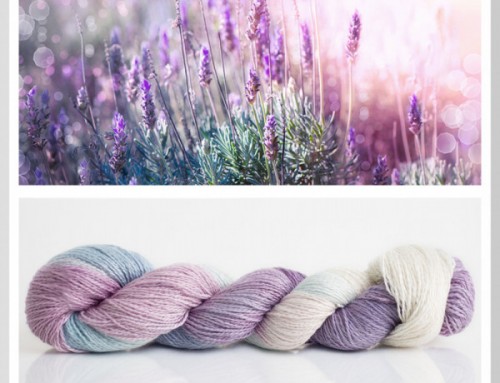
Hello Chandi,
Im new to the entire yarn world, but i fell in love with your work! Now I would like to try to dye cotton yarn and i like experimenting as well, but i like to check with you first. Did you ever dunk an entire ball of yarn in your paint mix? Would that slowly drip into the middle, or not reach it at all?
Very curious about your response (if you understood… my poor description)
Honestly, it’s been so long I can’t remember what I did. HA HA! But my rule of thumb with yarn dyeing is to try it and see what happens. So I say go for it! Chandi
Chandi
If you dunk a ball or cake of yarn into a color it creates a gradient. The colors will begin to separate out and you will see lighter colors on the inside of the ball and darker colors on the outside. If you would like a uniform skein just put the skein in the dye bath.
Cotton yarn dying is a whole New ball game. Not the same as wool yarn. Look up how to dye cotton yarn for help.
I have a ? If you have already skiens of wool yarn, will heating them in the dyeing process shrink thee yarns
No, it shouldn’t, so long as they are superwash wool or other non-shrinking fiber
If its not a superwash type wool (say, fisherman’s by Lion Brand, or a homespun skein), you can still dye it, just be careful about how quickly you change temperatures. Temperature shock will cause shrinking and felting. Put the skein in a room temperature waterbath and gradually bring up to the high temperature, then proceed to dye at the same temp (don’t know if you can microwave dye that), then allow to gradually cool. Crockpots work well for the gradual temperature change, though it takes a while.
the only concern I have to mention for this tutorial is to make sure that if you use a hair clippy in the microwave, make sure it doesn’t have a metal spring or hinge.
You mentioned Dawn dish soap. Does it work interchangeably with vinegar?
Only for the pre-soak phase. During the actual dyeing process you will need to add something acidic so that the dye adheres to the yarn. I hope this helps!
Hi Chandi,
I would like to try and dye a merino/nylon bare sock yarn a nice light beige/ wheat colour. What dye powders would you suggest I mix to get that colour? Yellow and a touch of Rust? Would that fo it?
Xox
Hi Diedre, since we order our dyes in bulk those won’t be very helpful but maybe you can find what you’re looking for here: https://www.dharmatrading.com/
Have a nice weekend!